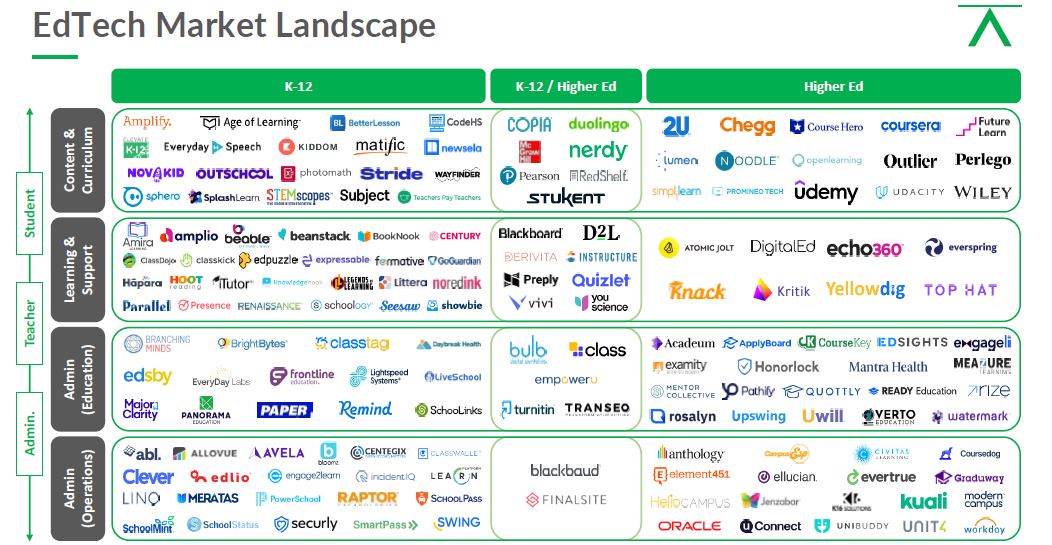The pandemic forced all schools to reconsider the role of technology in day-to-day operations. K-12 and higher education institutions have traditionally been slow to adopt software and digital tools for classroom and administrative purposes, but they were forced to adapt quickly in early 2020. As in-person school days gave way to remote learning, students and teachers found new ways to collaborate online. We don’t expect the rate of technological adoption to continue on the trajectory of the last couple years, but it is clear that schools are now much more open to the possibilities presented by digital alternatives.
While technology played a vital role in allowing schools to continue operating during the pandemic, there were limitations to its impact and research is already starting to demonstrate the adverse effects that COVID-19 had on learning outcomes, in the U.S and abroad. It is apparent that these delays are substantial and will have massive economic repercussions in the future. These studies also highlight the disproportionate impact COVID-19 had on education in certain segments of the population, which has only increased the existing learning gap. This was driven by factors including the length of school closures and the access to resources.
As schools and educators look to make up for lost time, it’s clear that technology has a role to play. As more tech-savvy educators continue to enter the workforce there is real belief that digital solutions can improve the personalization, equity, and efficacy of learning outcomes. Catalyst has been actively involved in the EdTech landscape historically and remains excited about the space in the context of these recent developments.

